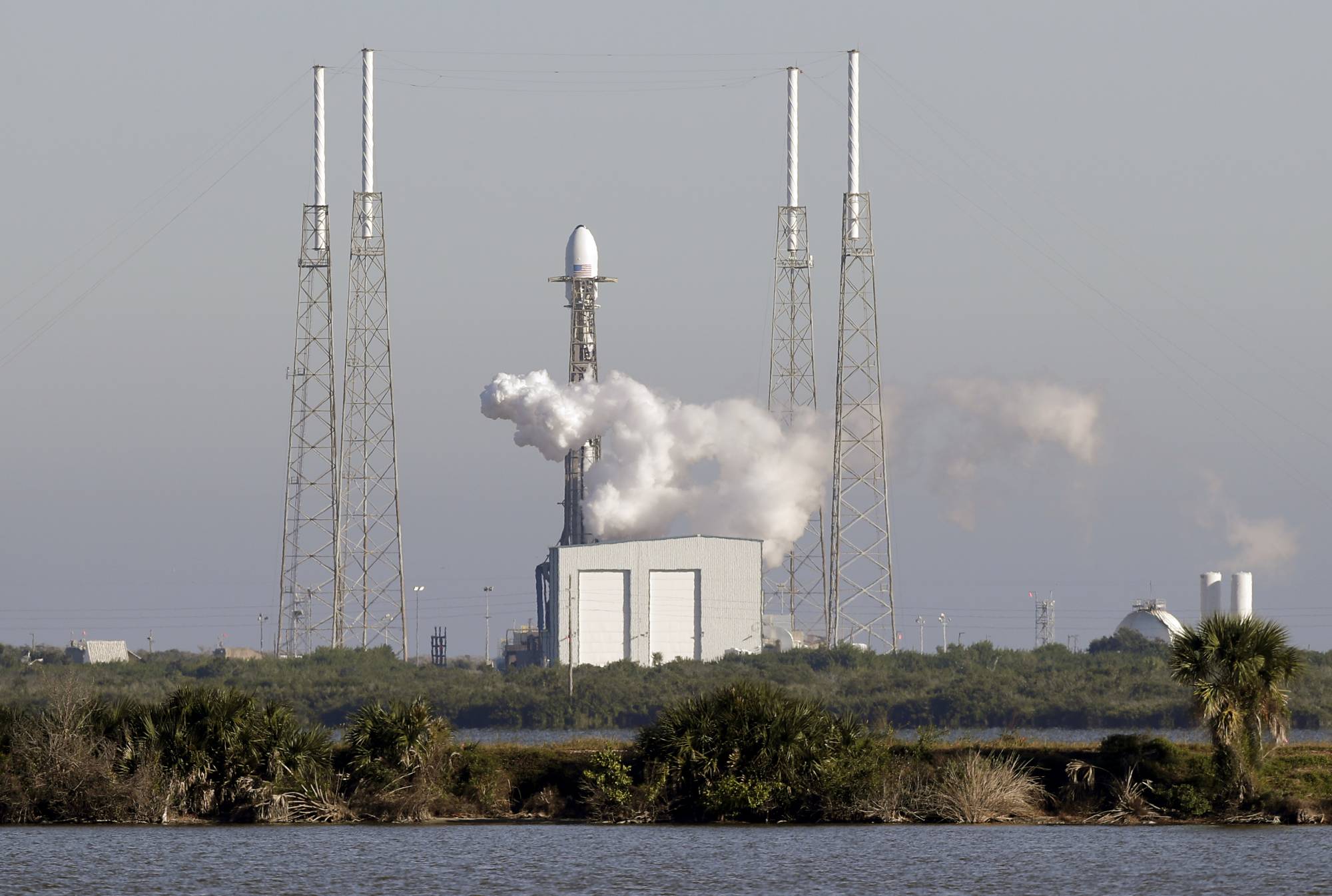A joint business venture to help maintain national security in space
Space Hour's Eric White speaks with Matt Kuta from Voyager Space about a joint venture it's entering to improve national security in space.
Two commercial space companies have agreed to work together on enhancing national security capabilities in the commercial space domain. Voyager Space and Palantir are using their abilities to help support and protect new technologies to be used on the International Space Station, and the soon to come Starlab commercial space station. I wanted to find out more about what this agreement means and get an overview of those involved, so I spoke to Matt Kuta, Co-Founder, President and Chief Operating Officer of Voyager Space.
Interview Transcript:
Matt Kuta Voyager Space and Palantir are both Denver based companies. And Voyager, we’re a space technology company, largest commercial user in the world of the International Space Station. Notably, we’ve also are prime contractor to build through a public private partnership the replacement of the International Space Station, owned by private industry. And when we think through a space station and, the platform, there’s a lot of data that is generated in space, structured and unstructured data. And for lack of a better analogy, the ability to send all of that data down the pipes are restricted to pipes are kind of clogged. It’s very difficult to send all the data down to Earth to transmit it. So when you think about how do we capitalize on all this data that is, generated on a space station that’s privately owned, and then think through the concept of maybe computing on the edge, or you’re using a company like Palantir, and they’re proving credibility and capability of artificial intelligence and machine learning to basically kind of transmit down to the customer, the end user, the answer or and a few options of answers for them to then go use however the customer might need. That’s how you kind of arrive at this really unique partnership with Palantir and Voyager space, where Palantir is not in the business of building space station. Voyager is. At the same point Voyager is not in the business of, creating from scratch in organic AI machine learning capability. So that’s kind of, how it came about.
Eric White So when you say AI and the machine learning capability, you primarily mean creating a mechanism that can take all of the vast amounts of data that, you know, whatever machine you have up in space right now is gathering at all times and being able to do what with it, break it down, or just categorize it in a way that’s actually useful because it’s a lot it is a lot of data, as you mentioned.
Matt Kuta Right? Yeah, it’s a little bit of both. I, I actually turn out to say it’s a little bit of what the customer needs. Right. So, some customers might say, hey, here’s our constraints and our, our desired outcomes and send me the answer like it’s maybe it’s to track, certain things in the ocean or something like that, or send something down to a warfighter on the battlefield. And it’s a very precise solution we’re delivering to a customer. But it can also be to your other point, hey, you know, we have all this data. Here’s more curated assemblage or smorgasbord, if you will, of options for you to kind of go and use. But the bottom line is, how do we leverage a space station’s higher power supply computing on the edge to partner with a company like Palantir to send a much more concise, user friendly answer versus giant packets of data that, might not be able to all complete and be able to be transmitted down to Earth.
Eric White And so let’s focus back on those said customers. Who might that be? Would that be government agencies, I imagine, and maybe some other entities that could find that data useful. Who are you looking to work with? And what are the fruits of the labor going to look like?
Matt Kuta Yeah. Well, I say, as I mentioned today, Voyager is the largest commercial user of the International Space Station. As a matter of fact, Voyager and Palantir have actually already worked on a joint proposal to a Department of Defense customer already. So, they think to replace that ISS. It’s a spectrum of it’s a continuation of stuff we’re already doing today and what will occur in the future, if you think to those customers, certainly national security customers. But, given the future space station called Star Lab will be a commercial station, it can certainly also be both national security and commercial use. So, example could be maybe in Star Lab, we’re serving, a DoD customer, for example, maybe like United States Navy or something like that to help support naval assets. But we think through a commercial application. Maybe there’s some, tangential or direct application of helping a commercial company with our shipping vessels. Something like that.
Eric White Got it. We’re speaking with Matt Kuta. He is the president of Voyager Space. And so, as you talk about these national security implications, you know, just from a person who covers this, beat, and sees the amount of business that these commercial space companies have been doing with defense entities all over the world really, that amount of work together has exploded. And it’s part of the importance, you know, in defense industry and Defense agencies seeing the importance in space. But can you talk about a little bit about that and how, you know, how much more are you working with, government entities for national security purposes?
Matt Kuta Yeah. Well, it’s a bad a bad use of the word when talking to a space guy about the industry exploding. oh. Yeah.
Eric White Sorry. We’re full of puns here at Space Hour.
Matt Kuta Right, right. But when you think through rapidly growing, if you will. Yeah, it’s really exciting time to be in a space, sector. Commercial space sector. You know, just a couple things. One, the I’ll call it the national security apparatus is in this transition. And what you know it won’t happen completely for many reasons. But it’s in this transition where instead of the U.S. government owning some of these hard assets, government owned, government operated for decades, they’re seeing how efficient the private sector can be and looking to capitalize on that efficiency, both in the capital markets, that innovation nimbleness speed to execution and completion, and have the ability to buy it as a service. You know, we talked about the space station. You know, the International Space Station today is owned by the government. It’s really five space agencies, five kind of government entities. It’s NASA, the European Space Agency, Roscosmos, JASA, the Japanese space Agency, and the Canadian Space Agency. It’s effectively owned and capitalized by those five entities. And when the International Space Station is deorbited in 2030, which is publicly announced, the United States government will never own another low-Earth orbit space station. It will be owned by private industry. That’s what we’re working on. And when it is in orbit, the industry will own it. And then the customers governmental customers like NASA, ESA, national security customers, commercial customers like pharmaceutical companies, life science companies or basically build a microgravity laboratory. We’ll use it as a customer. And it’s an infrastructure investment. And there’s a precedent for this. If you go back in time to the late 1990s, early 2000s, and you ask yourself, well, who owned the space shuttle with the wings, you know, come in and land? That was the government. Government owned that NASA. And then, early 2000s around 2006 seven, the US government ended the space shuttle program. And so, we have to privatize it. And at a time, two companies want a public private partnership contract called a Space Act agreement. One was Orbital Sciences is with now orbital ATK, owned by Northrop Grumman. They built a Cygnus resupply vehicle down to about two dozen times to the ISS. And the second company was a four-year-old SpaceX. It had never launched a rocket. And fast forward 15-20 years, if you ask anybody, well, who owns SpaceX, who owns the rockets? No one says the government. They say, well, the company does, the investors do. And then the customer, the government, venture capital backed satellite companies, tourist, whoever pay SpaceX as a customer to launch their payload and they charge margin. You’re seeing it you being used in applications like in the in the Ukraine conflict with Russia and Planet and Max are you know, governments are buying imagery from commercial companies now. So, there’s lots of exciting, you know, developments in us.
Eric White And talking a little bit about the past, before I talk about the future, I’d like to get a little bit more into Voyager’s past itself. You’ve mentioned a couple times now on how you’re the biggest commercial user of the ISS. How did you all get to this point? And, you know, where did you all start? Where did you all actually start out?
Matt Kuta Yeah. So, over the last few years, Voyager has been basically vertically integrating core parts of the space station supply chain in anticipation that the US government was going to look to deorbit the ISS and privatized ISS. Over the last couple of years, Voyager has a series of seven acquisitions as part of our space station supply chain, strategy. And so, Voyager itself, the company is, just over four years old, the underlying operating history of Voyager, it goes back, you know, about 20 to 30 years.
Eric White And so now, towards the future, what is it looking like? You know, you just spoke a little bit about how you’re preparing for that deorbit of the ISS. But, you know, as this moves forward, do you all see you yourselves going into other areas of space acquisition or, you know, working in other sectors as you increase, you know, in the national security realm as well?
Matt Kuta Certainly. I mean, as I mentioned, we do a lot of work on the ISS today. We do a lot of work, in communications. I think, we have around over 4 million space flight hours in communication technology and in orbit. I think we have about 450 assets in space today. So, when you think through space station and the space station replacement, that’s, a very marquee program. It’s very exciting. It is a strategic asset. It’s a demonstration of sovereignty in orbit, to the to the United States and our allies. But at the same point, there’s a lot of other exciting, opportunities both within space sector that Voyager, you know, is already capitalize on. And we’ll continue to we’re very excited about the continued development of cislunar infrastructure, basically the place between Leo and in the moon, a lot of, for lack of a better word. Railroad tracks need to be laid between, the Earth and the moon. There’s a lot of stuff happening on the moon. So, I think there’s a lot of opportunity here or there over the next, you know, 10 to 20 years. And, of course, always, close to home. And Leo is kind of the government agencies have ceded through, you know, ceding investment, if you will. The lower Earth orbit, geography, and economy, they’ve been working on it for 70 years. And what you’re seeing in the last ten years is a slow transition, where now NASA and the government can free up budget dollars to go deeper into space. As they hand the baton and the keys to private industry for the stuff closer to home, in low-Earth orbit.
Eric White Matt Kuta is the co-founder, president, and chief operating officer at Voyager Space. Find the rest of this interview at our website at Federal News network.com. Search the Space Hour.
Copyright © 2025 Federal News Network. All rights reserved. This website is not intended for users located within the European Economic Area.
Eric White is news anchor and Federal Drive producer at Federal News Network.
Follow @FEDERALNEWSCAST






